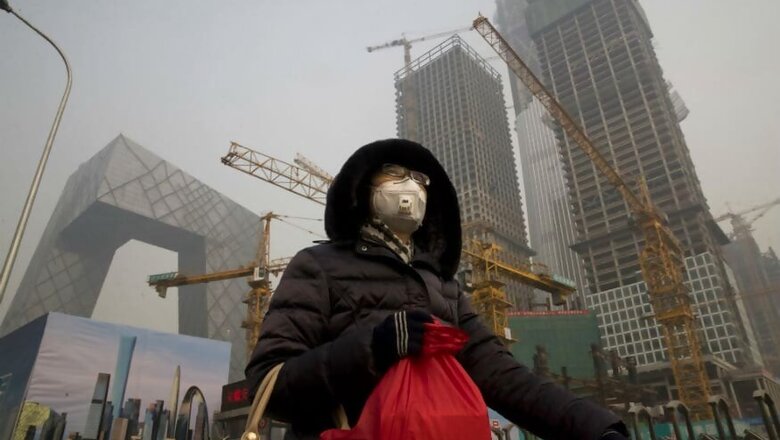
views
Shanghai: Only four of 28 northern Chinese cities met their air quality targets in October, official data showed on Tuesday, raising questions about the country's ability to reduce the smog that typically develops during the winter.
The 28 cities in and around the smog-prone Beijing-Hebei-Tianjin region were ordered in August to draw up plans to thin traffic and reduce industrial activity from October 2017 to March 2018, part of efforts to slash concentrations of hazardous airborne particulate matter that is less than 2.5 microns (PM2.5) by at least 15 percent year-on-year.
But the Ministry of Environmental Protection said only the capital Beijing, together with Baoding and Shijiazhuang in neighbouring Hebei province, as well as Anyang in Henan province, actually met their targets for last month.
"According to forecasts, overall winter weather conditions in the Beijing-Tianjin-Hebei region will not be favourable, with the ability to disperse atmospheric pollution relatively weak, making the targets even more difficult to achieve," the ministry said in a bulletin published on its website (http://www.mep.gov.cn).
Beijing is aiming to cut PM2.5 by as much as 25 percent over the winter months as it strives to meet a target to bring concentrations down to less than 60 micrograms per cubic metre for the whole of 2017.
Beijing's PM2.5 fell to an average of 57 micrograms in October. The average across the 28 cities stood at 61 micrograms, still higher than China's official standard of 35 micrograms as well as the World Health Organization recommendation of no higher than 10 micrograms.
Of the total, 17 cities saw PM2.5 concentrations fall last month, including the municipality of Tianjin and the major steel producing city of Tangshan.
The city of Jincheng in Shanxi province was the worst performer, with average emissions rising 139.1 percent compared to a year earlier. It has targeted a cut of 10 percent this winter.
Cities in Shanxi have promised to reduce PM2.5 by as much as 50 percent over the winter months, and the provincial government has also said it will hold senior municipal officials fully accountable for failing to meet their targets.
China is targeting PM2.5 because the matter can lodge in the lungs and cause cardiovascular and respiratory diseases.




















Comments
0 comment